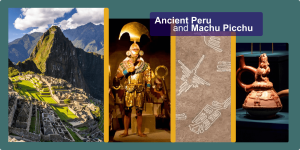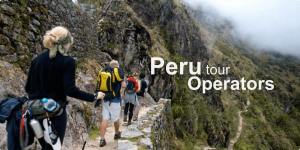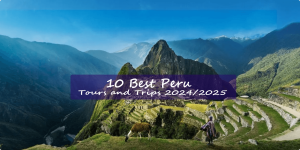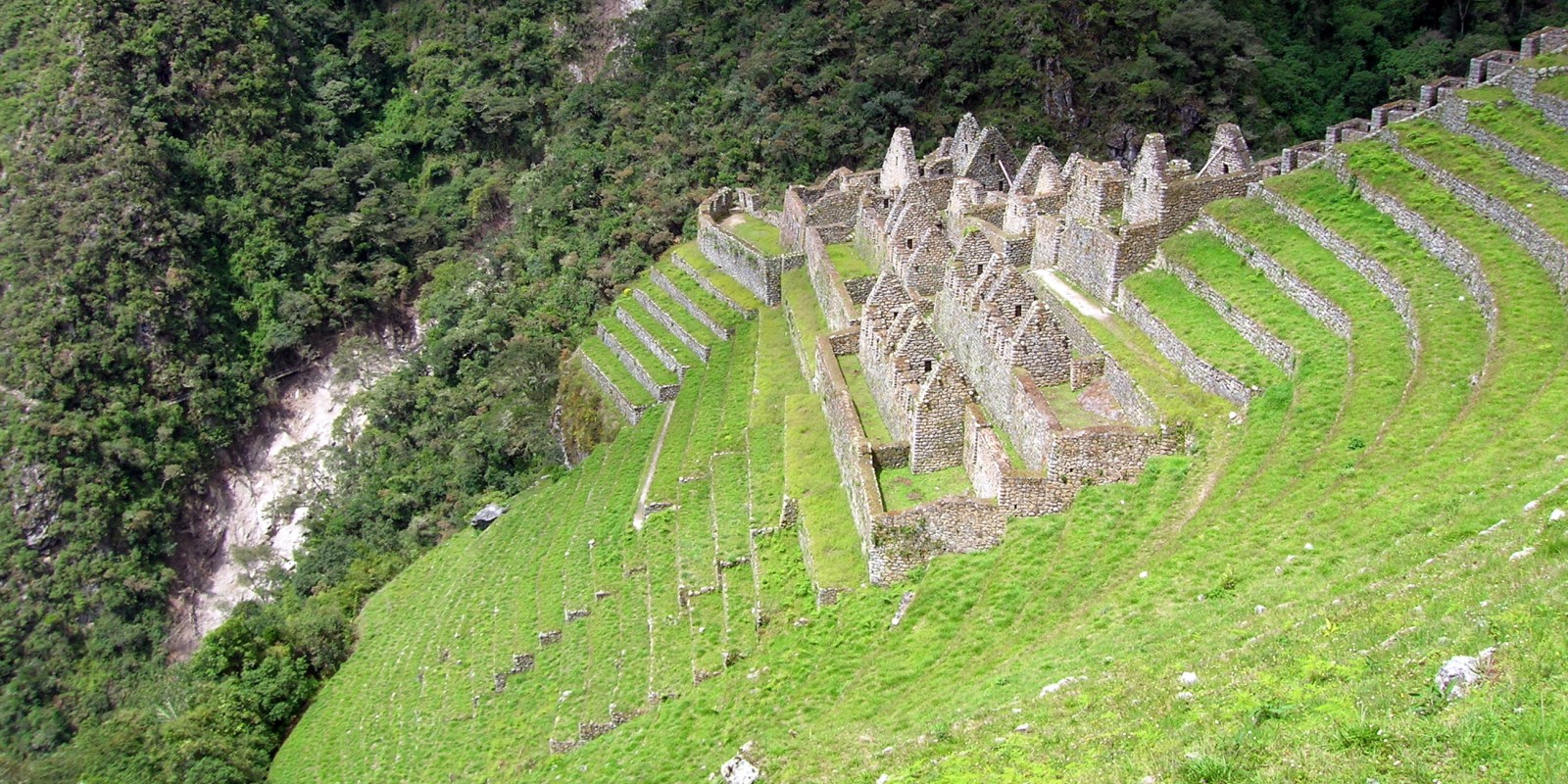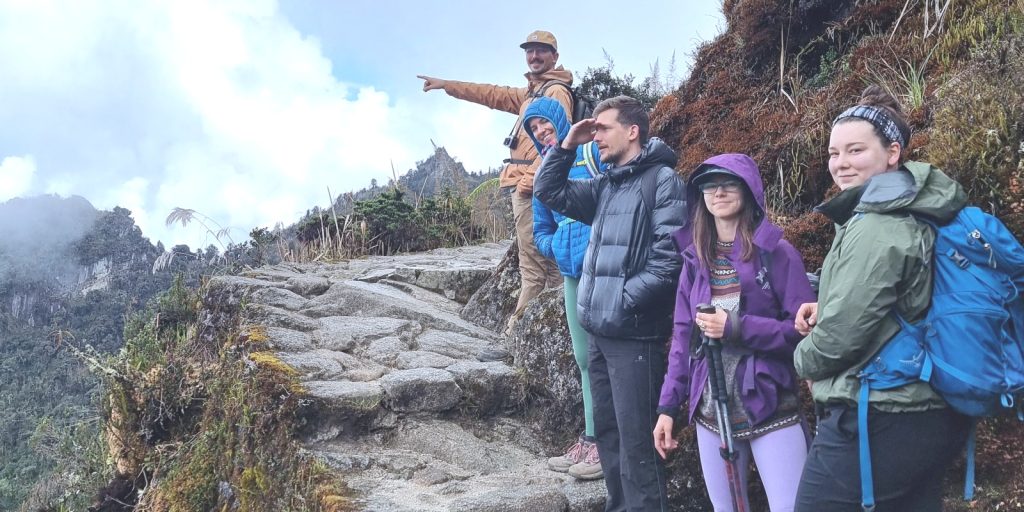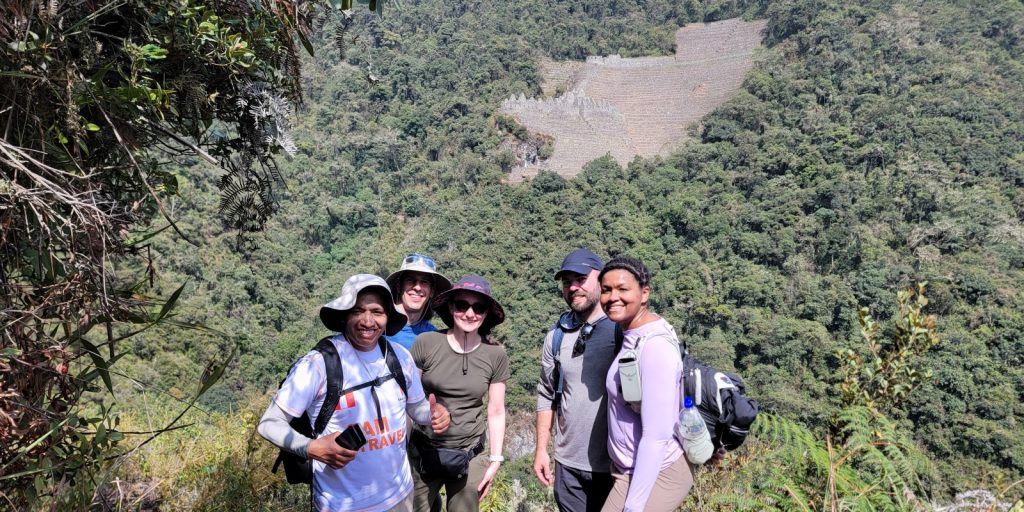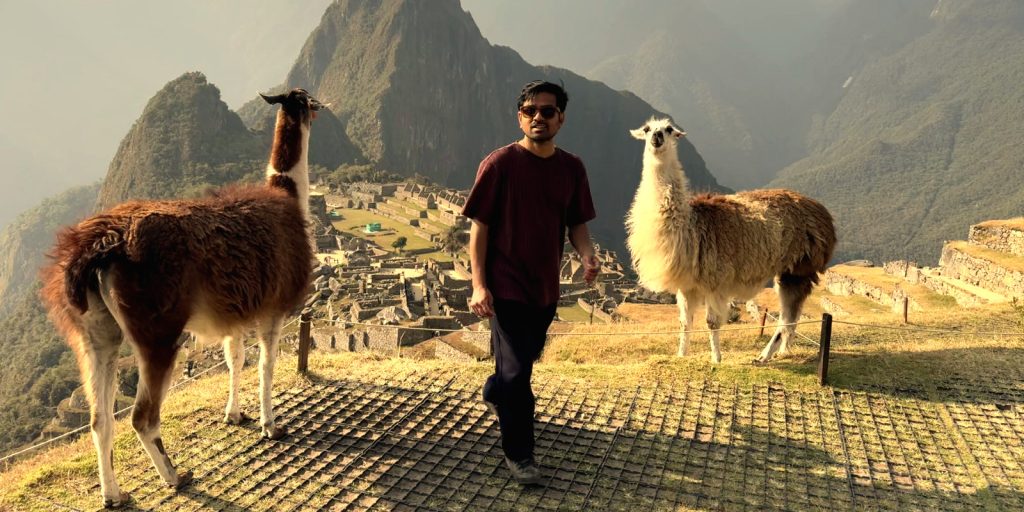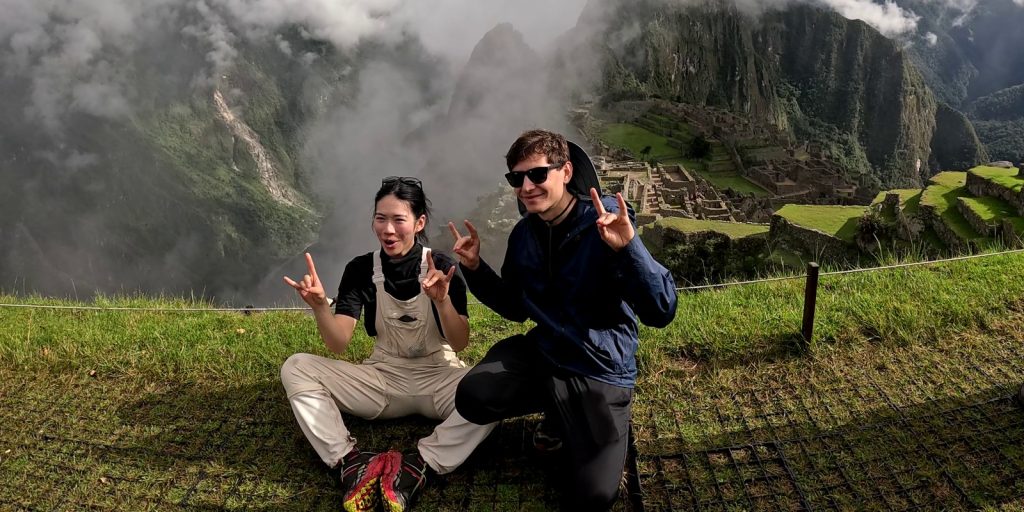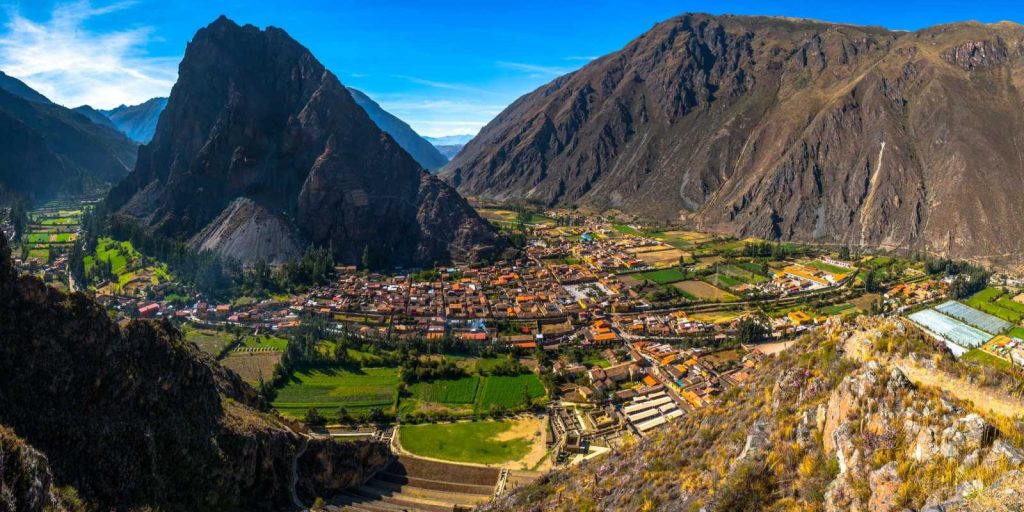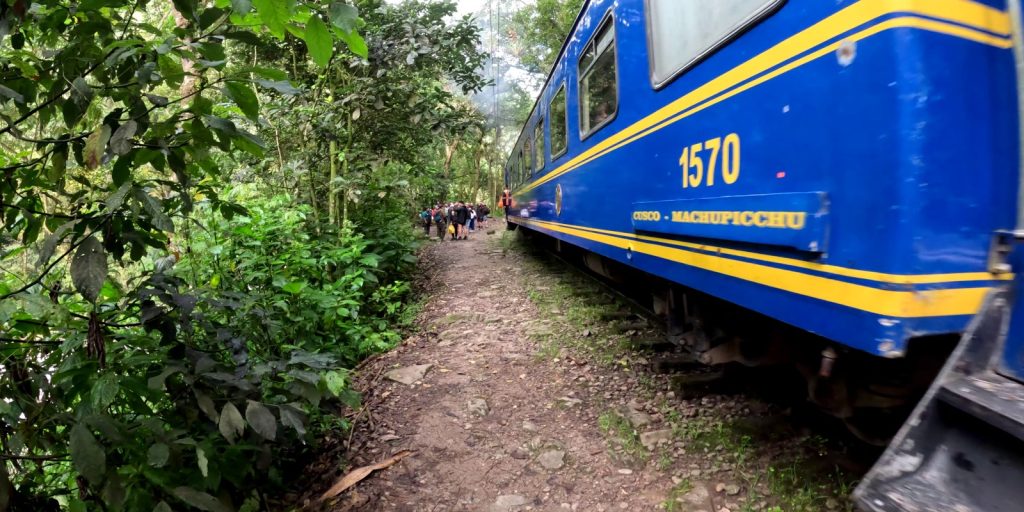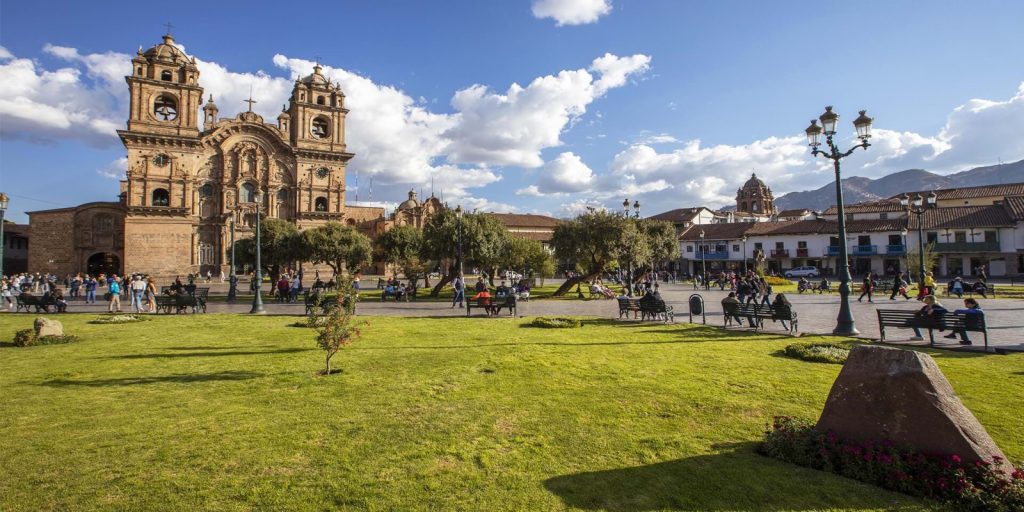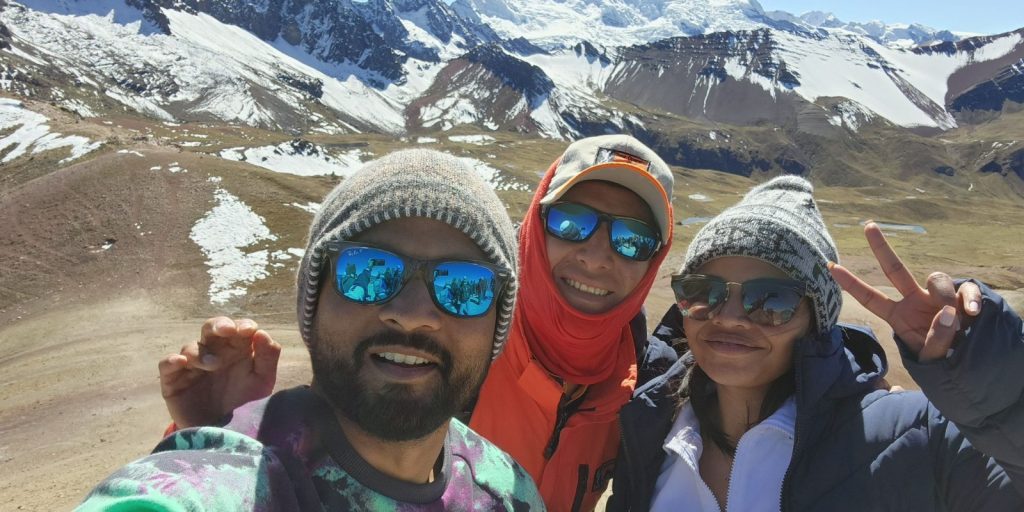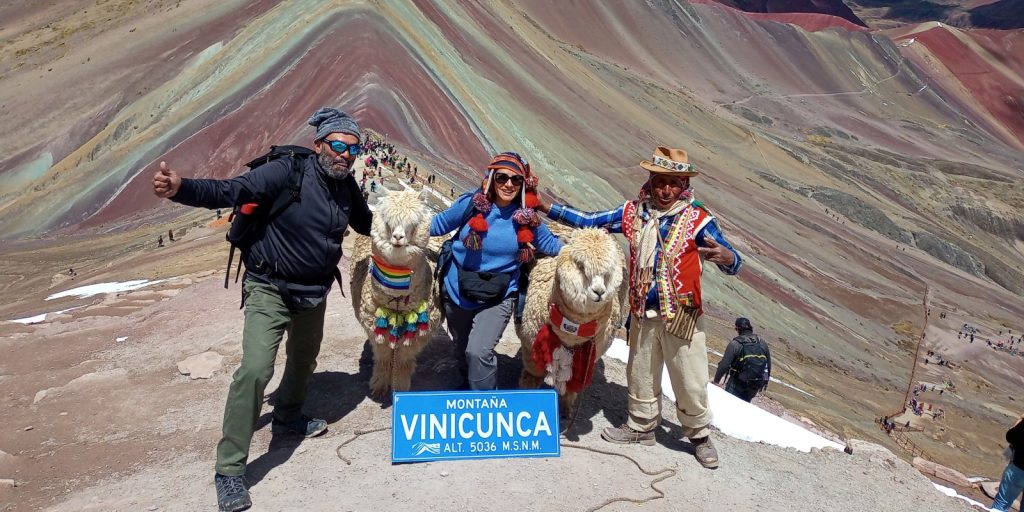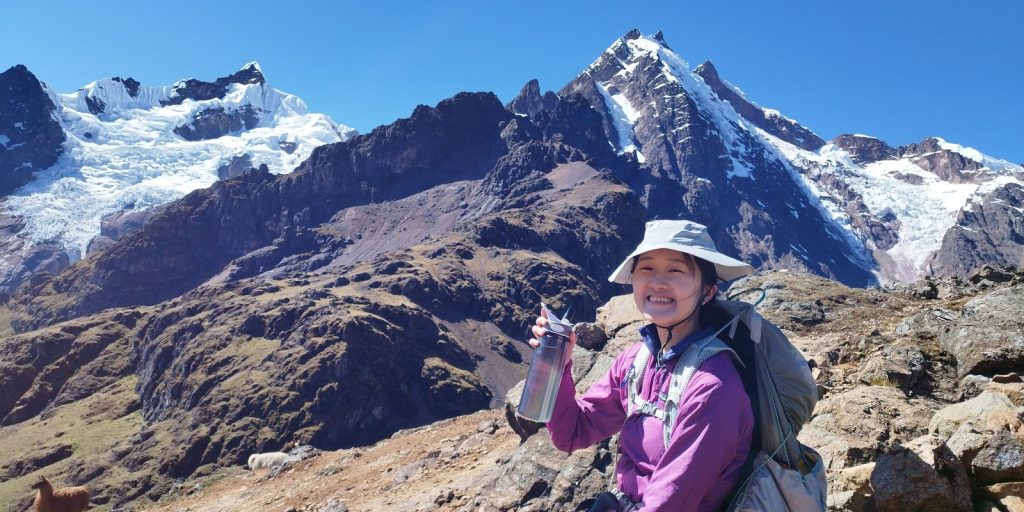Deep in the Peruvian Andes lie the incredible ruins of Wiñay Wayna. These ruins are often overlooked in favour of more popular alternatives like Machu Picchu. There’s no reason why you can’t enjoy both, even on the same hike. On the Inca Trail you will pass Wiñay Wayna and it is certainly worth a visit – read on to find out why.
Discovered many decades after Machu Picchu, Wiñay Wayna is an extremely well-preserved ruin. It almost seems to hang from the side of the mountain. Divided by a few steep steps and home to a few friendly llamas, it is a great place to visit during your trip to Peru.
How to get to Wiñay Wayna
There is only one way to get to Wiñay Wayna. You have to hike to the ruins. There are two different routes you can take, each with its own variations. The first and most common way to get to these incredible ruins in the sky is via the classic 4-day Inca Trail.
You will arrive at Wiñay Wayna on the third day of the 4-day hike. Your tents will be set up at the campsite of the same name, just two minutes from the ruins. Walking the classic 4-day trail, you will arrive from above, having crossed the last mountain pass of the trip.
This pass is known as Phuyupatamarca and sits at an altitude of 3,680 metres (or 12,073 feet). The steady descent to reach the Wiñay Wayna ruins (which sit at 2,680 metres or 8,792 feet). This means you’ll be refreshed, bright-eyed and recharged, ready to experience the ruins.
The other way to get to Wiñay Wayna is to take the shorter and easier version of the Inca Trail: KM 104. KM 104, also known as the two-day Inca Trail is. You might guess from the name, an Inca Trail hike that lasts only two days.
You’ll probably be relieved to know that this doesn’t mean you have to attempt the same route as the classic four-day itinerary in two days (that would be cruel). KM104 takes a slightly different route and joins the classic four-day itinerary at Wiñay Wayna.
Unlike the 4-day Classic Inca Trail, the 2-day Inca Trail is hiked from below. The highest point on the trail is Inti Punku, or the Sun Gate. This is where the famous photographs from above of Machu Picchu are taken. The Sun Gate is located at 2,730 meters (8,956 feet) and just a few kilometers from Wiñay Wayna.
On the 2-day Inca Trail, hikers complete the final 12km of the trail on the first day of the adventure. Also hike to Machu Picchu on the first day. Later descend to Aguas Calientes (also known as the town of Machu Picchu) to rest for the night. Travelers then return to the citadel on the second day. Enjoy their guided tour before returning to Cusco or the Sacred Valley in the afternoon/evening.
Both trails usually pick up their passengers in Cusco. Most tour companies also offer a pick-up service in the Sacred Valley. Cusco is recommended, as it is higher and there is more opportunity for acclimatization than in the Sacred Valley.
Both treks will then take you to Ollantaytambo, where hikers on the 4-day Classic Inca Trail will head to their starting point. Those who have chosen the 2-day Inca Trail will board the train and, after an hour and a half, get off at the 104 km stop, where their trek begins.
Whats is the Wiñay Wayna Inca Ruins Elevation
Wiñay Wayna is located at 2,680 meters above sea level (8,792 feet). This altitude is considerably lower than that of Cusco, which is located at 3,400 meters (11,155 feet). This means that if you have acclimatized in Cusco, you will probably have no problems with altitude at Wiñay Wayna.
However, if you hike the 4-day Inca Trail, you will pass through much higher passes than Wiñay Wayna, so make sure you have time to acclimatize (ideally in Cusco) before attempting the trek.
Do I really need a tour?
Yes! We are sorry, but there is no way to get to Wiñay Wayna without hiring a tour. Both the 4-day Classic Inca Trail and its shorter counterpart require hikers to be accompanied by a certified Inca Trail guide at all times, and in most cases, hikers are also required to travel with porters.
These rules are put in place to maintain the integrity of the trail. This is done so that a certain level of control can be established when it comes to trash, places where people use the bathroom, and places where they camp. It is also done to ensure the safety of everyone, as evacuations on the trail do occur and are simply not feasible for travelers without the assistance of porters.
Should I take the 2-day Inca Trail or the 4-day Classic Trail?
It depends on your preferences! If you are only interested in seeing Wiñay Wayna (and, presumably, Machu Picchu, of course), then the 2-day Inca Trail should be perfect. It gets straight to the point, without wasting time.
The 4-day trail will pass by several ancient Incan ruins, giving you plenty of extra time to enjoy the route and your time among the ruins. The longer trail also takes its time to make you fall in love with Machu Picchu a little more.
You will spend days trekking through the mountains. By the time you reach Wiñay Wayna, you will have been completely immersed in Inca history for days. This makes reaching Wiñay Wayna and Machu Picchu an even greater achievement. It will allow you to relive the pilgrimage that many Incas would have made hundreds of years ago.
The 4-day trek is not for the faint of heart. It is certainly worth it for those willing to walk it. Each step brings you one step closer to unraveling the mysteries of the Inca Empire. Each step takes you deeper into the heart of the incredible Andes mountain range and closer to Wiñay Wayna.
In contrast, the 2-day Inca Trail is ideal for those who aren’t looking for a huge multi-day hike. But still want to see some interesting Inca sites (including Wiñay Wayna) and hike to Machu Picchu while doing so.
It is also ideal to combine with other popular treks to Machu Picchu. So, if you are more interested in the modern rural culture of the Andes, but still want to see Wiñay Wayna, you will probably prefer to do the Lares trek with KM104. Please contact us to discuss your options with one of our expert travel designers.
There is no “right” answer to which hiking trail is best for you. It all depends on your personal preferences, your fitness level, and how much you enjoy camping.
Where is Wiñay Wayna Inca Ruins located?
Wiñay Wayna is located at km40 on the classic 4-day Inca Trail, which is reached on the third day of the iconic trek. If you choose to travel the 2-day Inca Trail, Wiñay Wayna is located 7 km from your starting point.
From Wiñay Wayna it is around 2 hours (about 5 km) to Machu Picchu. It is not possible to travel from Machu Picchu to Wiñay Wayna. The ruins are in the Vilcabamba mountain range, the nearest town is Aguas Calientes. T he closest town from which you can access Wiñay Wayna is Ollantaytambo. Aguas Calientes is where the hike ends.
Why is Wiñay Wayna famous?
Wiñay Wayna translates to “forever young” in Quechua, the indigenous language of Peru. Sadly, this is not the name the Incas gave to the site, but a name given later. This is because the site was lost in time until the early 1940s, when explorer Paul Fejos led an expedition into the jungle from Machu Picchu.
Wiñay Wayna is one of the best-preserved ruins in all of Peru. During your visit you will see numerous agricultural terraces covering the mountainside, with several buildings on top of the cleared area. What you may not know is that much of the forest behind the ruins, the site continues to spread out.
There is much more to Wiñay Wayna than meets the eye. What you see at first glance is extremely interesting. The name comes from the large number of orchids that can be found throughout the place. In fact, many different flowers and plants can be found here. The abundance of plant life certainly makes the air feel particularly clean and fresh.
The story of Wiñay Wayna Inca Ruins
Wiñay Wayna Inca Ruins were built during the Inca Empire. Cusco was the capital of the Inca Empire and the proximity of Wiñay Wayna and the style of construction leave no doubt that this archaeological site belonged to the Inca Empire.
Wiñay Wayna is thought to have been built at the same time as Machu Picchu. Machu Picchu was originally built by the Inca king Pachacutec. Pachacutec was known for being a bit of a perfectionist, so when you see Inca stone cut with such care, you can be sure that it was all thanks to him (a great example of this is Sacsayhuaman).
His son and successor, Tupac Yupanqui, completed Machu Picchu. The difference in construction style is quite noticeable. Pachacútec’s work has undoubtedly stood the test of time. Tupac Yupanqui’s work has been restored.
Since Pachacútec ruled the Inca Empire between 1438 and 1471 (AD), we can assume that Wiñay Wayna was built around that time. It is believed that the site was probably abandoned some time after the Spanish invasion in 1528.
Wiñay Wayna is believed to have been used as an agricultural centre (this is thought to be the case due to the large number of terraces that we know were used for growing crops). It is also thought that part of it was probably used as a religious centre. We know this thanks to some of the buildings found within the ruins.
Wiñay Wayna is believed to have been used for pilgrimages or as a stopover on pilgrimages to Machu Picchu. This would help explain why the site was abandoned after the Spanish invasion.
Wiñay Wayna is one of the best and most interesting ruins on the Inca Trail. It is a highlight and welcome checkpoint for many travelers on their trek to Machu Picchu. Much of the history of these ruins is shrouded in mystery and the excitement of discovering them for yourself only increases with each trip.
If you are ready to start planning your trip to Wiñay Wayna, contact us today and we will help you plan the perfect trip for you.


